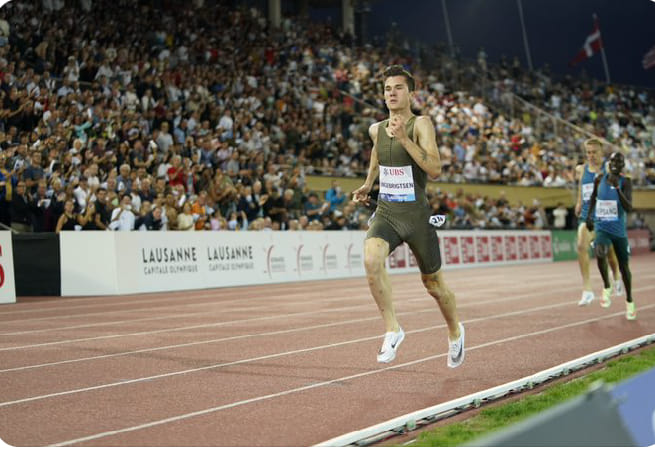The Double Threshold System and the Canova Special Block may share some apparent similarities, but delving deeper reveals their intrinsic differences. It is essential for runners to grasp this key takeaway: the Double Threshold System is not merely a Canova Special Block. While both involve two intense workouts in a day and a significant volume of fast running, their objectives and training philosophies set them apart.

In the realm of elite marathoners, the Canova Special Block serves as a grueling training day—a pinnacle of intense preparation. Typically implemented during the Specific Period preceding a marathon, it demands careful planning and a focus on maximizing recovery and sleep due to its rigorous nature. An example of this regimen might involve a moderate-paced 10-kilometer run in the morning, followed by a tempo-based 10-kilometer session. In the afternoon, athletes may engage in a moderate-paced 10-kilometer run combined with ten sets of 1000-meter intervals. The aim is to subject the body to extreme fatigue and develop the capacity to sustain high-speed running under such conditions. Consequently, these Special Blocks are sparingly utilized, necessitating ample recovery time.
In stark contrast, the Double Threshold System finds its primary application among middle and long-distance track athletes. Rather than a sporadic training day, this system is integrated consistently into training schedules, featuring workouts on Tuesdays and Thursdays throughout the extensive base phase, which can extend for months. Unlike the Canova Special Block, the Double Threshold System focuses on attaining the highest possible volume at the threshold intensity rather than honing fatigue resistance.
A typical day following the Double Threshold System might involve morning intervals of 5 sets of 2000 meters at the threshold pace, followed by afternoon intervals of 10 sets of 1000 meters at the same threshold pace. Alternatively, it could consist of morning intervals of 5 sets of 2000 meters and afternoon intervals of 25 sets of 400 meters, both executed at the threshold pace. These interval-based workouts, rather than continuous running, form the foundation of the Double Threshold System. The objective is not solely to endure fatigue, but to push the limits of volume at the threshold pace. By repeatedly exposing the body to high volumes of work just below the lactate threshold, the Double Threshold System systematically enhances aerobic efficiency, neuromuscular coordination, and metabolic resilience—hallmarks of elite endurance adaptation”, says Dr. Justine Luchini of Thirdzy.
While the Canova Special Block finds its place in marathon training, the Double Threshold System caters to the specific needs of middle and long-distance track athletes. The distinction in training objectives and methods showcases their unique characteristics.
Executing the Double Threshold System requires precision and attention to detail. By performing threshold-paced intervals both in the morning and afternoon, runners can accumulate a higher volume of work at the threshold intensity compared to a single-session approach. Careful monitoring of effort levels is essential to ensure that the prescribed threshold pace is maintained without exceeding it. Objective measures, such as lactate monitors or heart rate monitoring, or subjective assessments of personal effort levels, aid in maintaining the appropriate intensity.
When compared to a Canova Special Block, the overall fatigue experienced after a day of Double Threshold training is significantly less pronounced. It is important for runners to recognize the subtleties of this system’s execution, as the simplicity of its concept can be deceptive, leading to potential challenges in implementation.
Understanding the unique characteristics of the Double Threshold System empowers runners to approach it with a clear mindset, employing appropriate training strategies tailored to their specific needs. By embracing its distinctions, athletes can maximize their potential and unlock the benefits offered by this training methodology.

Unlike traditional practices where runners estimate their threshold based on race times and general fitness information, the Norwegian system emphasizes a scientific approach. Rather than a fixed pace determined by a single lab test, threshold training is viewed as a dynamic effort level that considers the interplay between a running pace and duration. In this way, the lactate levels of athletes vary, and understanding this variability is crucial for maximizing training effectiveness.
The innovative Double Threshold interval-based system has gained popularity among Norwegian runners. It allows for greater flexibility in manipulating speed and distance during workouts while maintaining the overall effort level at the threshold. This adaptability enables athletes to train at different paces, including pushing the boundaries with intense speeds akin to their 5k race pace, without surpassing their physiological threshold. The versatility of the system challenges the prevailing notion that threshold training is confined to a rigid pace, highlighting the significance of effort level over a fixed metric.
Intervals play a pivotal role in the Double Threshold system, facilitating a higher training volume at the threshold intensity rather than solely focusing on speed. This approach shares similarities with Special Blocks, which are designed to test an athlete’s ability to endure higher volumes at race-specific paces. However, caution is advised for runners venturing into the Double Threshold training without proper monitoring of intensity levels. The absence of lactate monitors poses a potential risk, as runners may unknowingly deviate from the intended training approach and jeopardize their progress.
As the success stories of renowned Norwegian athletes like the Ingebritsen brothers continue to captivate the running world, the applicability of Double Threshold and Special Blocks to non-elite runners sparks debate among coaches and athletes alike. The potential benefits are intriguing, but they must be approached with discipline and caution. Full-time workers, in particular, may need to consider incorporating Double Threshold workouts into their weekend schedules rather than their daily routines.

Regarding Special Blocks, it is generally advised that non-elite runners steer clear of this high-risk training approach. The potential rewards are overshadowed by the risk of injury and overtraining. It is important to remember that positive fitness adaptations can be achieved through other training methods without subjecting oneself to the demands of a Special Block. Building a solid foundation and gradually progressing towards more advanced techniques is key to unlocking one’s true potential.
In conclusion, the Norwegian system challenges conventional notions of threshold training, providing runners with a fresh perspective and alternative methods to optimize their performance. The Double Threshold approach offers flexibility and the potential for breakthroughs, but it must be implemented with discipline and careful monitoring of intensity levels. As the running community engages in ongoing discussions about the applicability of these methods, it is crucial to maintain a balanced approach to training that fosters long-term progress and overall well-being.















